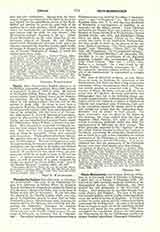

Thundering Legion (legio fulminata, or fulminea, not fulminatrix).—The story of the Thundering Legion is in substance as follows: When the Emperor Marcus Aurelius led an expedition against the Quadi in 174, his army, exhausted by thirst, was on the point of falling an easy prey to the enemy. It was then that the soldiers of the Twelfth Legion, which was composed of Christians, prayed to their God for help. Forthwith a heavy thunderstorm arose, bringing the desired relief to the Romans, but terrifying and dispersing the barbarians. Hereupon the emperor issued a decree forbidding the persecution of the Christians and to the Twelfth Legion he gave the surname of fulminata, or fulminea, that is, “thundering”. The earliest reference to this occurrence from a Christian source was made by Tertullian (“Apologeticum”, v, and “Ad Scapulam”, iv). He is quoted by Eusebius (Hist. eccl., V, v), who also cites Apollinaris of Hierapolis, a contemporary of Aurelius, as an authority for the alleged miracle. Later Christian authorities are Orosius (Hist. adv. paganos, VII, xv), Gregory of Nyssa (Oratio II in XL martyres), Jerome (Eusebii Chron., adn. 174), and Xiphilinus (Dionis Nicini rer. Rom. epitome, LXXI, ix, x). Pagan writers also testify to the miraculous thunderstorm, but they ascribe it either to the prayers of the emperor (Julius Capitolinus, “Vita Marci Antonini philosophi” xxiv; Themistius, “Oratio XV”, ed. Harduin, 191; Claudianus, “In VI consulatum Honorii”, carmen 28; “Oracula Sibyllina”, ed. Alexandre, XII, 194-200) or to the incantations of the Egyptian magician Arnuphis who accompanied the Roman army (Dion Cassius, “Hist. rom.”, LXXI, viii-x; Suidas, s.v. Ioulianos). On a coin, struck by the emperor (Eckhel, “Doctrina nummorum vet.”, III, 64), and on the Antonine Column in Rome, the “miracle of the thunderstorm” is represented as wrought by Jupiter.
The mass of historical evidence, as seen above, leaves no room for doubting the occurrence of the thunderstorm, but there has been a long controversy concerning various circumstances which early Christian writers mention as connected with it. The researches of Moyle, Mosheim, and especially the more recent ones of Lightfoot, Harnack, and others (see bibliography) have led to the following almost universally accepted results: A detachment of the Twelfth Legion, which was regularly stationed at Melitene in Armenia and comprised many Christians, took part in the expedition against the Quadi, and it is probable, though not certain, that the “miraculous thunderstorm” was an answer to their prayers. The name fulminatrix was not given to the legion on this occasion, but there existed since the time of Augustus (Dion Cassius, LV, xxiii) a legio fulminata or fulminea, probably called thus from the representation of lightning on their armor. The letter (generally appended to the “Apology” of Justin), which Marcus Aurelius is said to have written to the Senate, concerning the miraculous thunderstorm, and in which he is said to have forbidden the further persecution of the Christians, is either a forgery or it was interpolated to suit the Christians. It is an established fact that the persecution of the Christians became even more cruel shortly after this incident.
MICHAEL OTT

